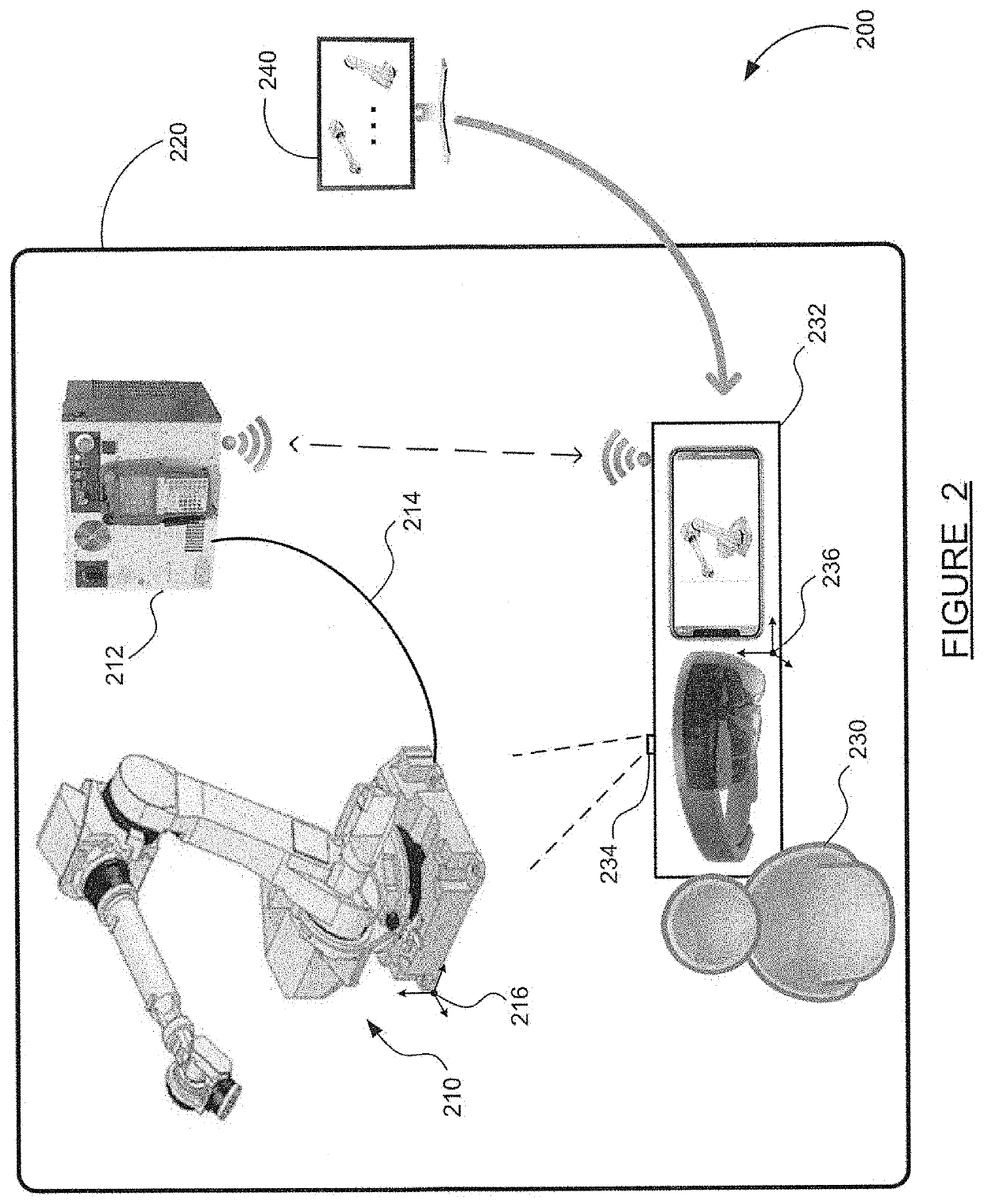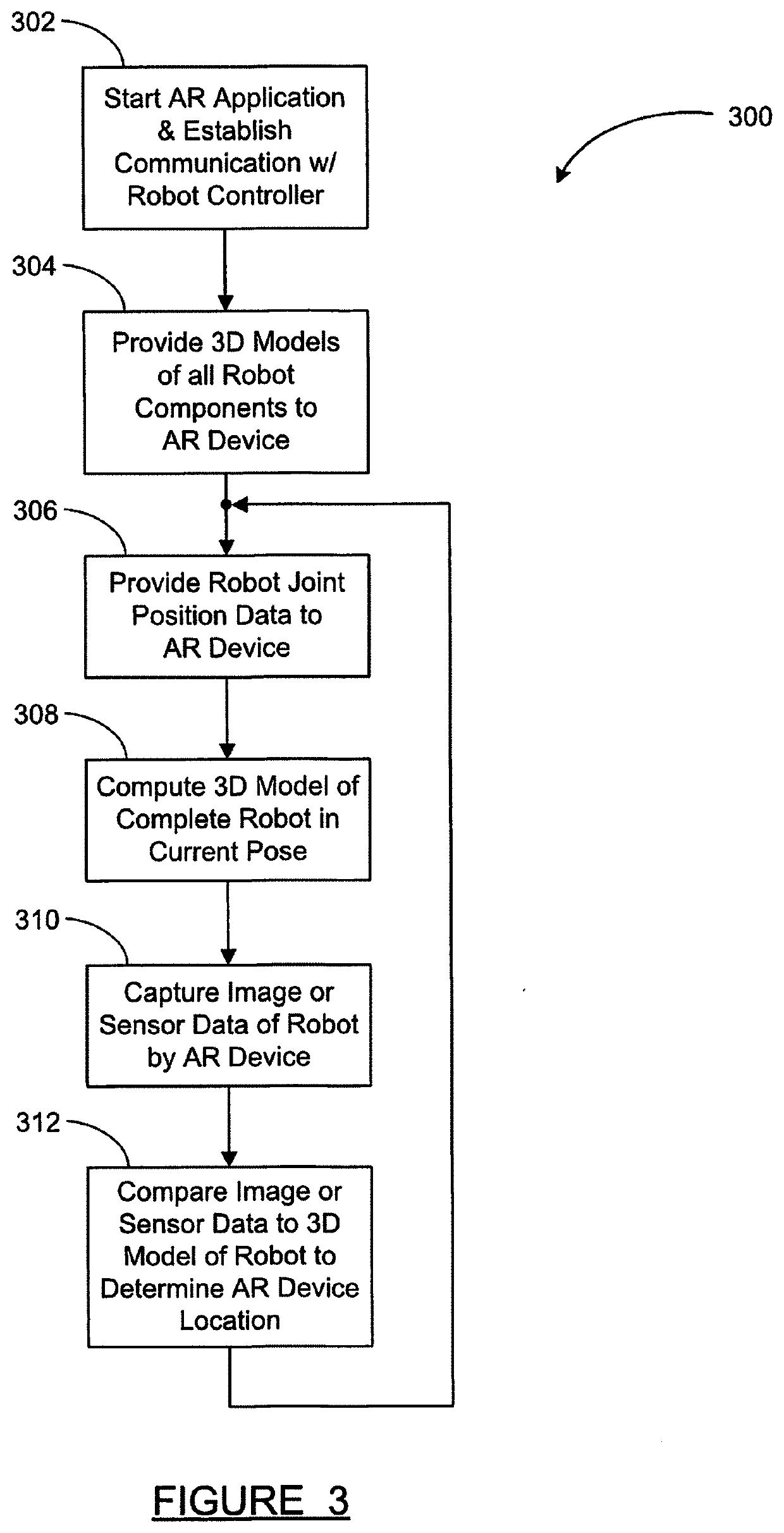Robot calibration for ar and digital twin
a robot and digital twin technology, applied in the field of industrial robots, can solve the problems of large error at longer distances, large effort and high cost associated with placing a planar visual target, and difficult time-consuming calibration of ar devices to achieve the required level of precision
- Summary
- Abstract
- Description
- Claims
- Application Information
AI Technical Summary
Benefits of technology
Problems solved by technology
Method used
Image
Examples
Embodiment Construction
[0012]The following discussion of the embodiments of the disclosure directed to a calibration of an augmented reality (AR) device's position and orientation based on a 3D surface model of a robot in any pose is merely exemplary in nature, and is in no way intended to limit the disclosed devices and techniques or their applications or uses.
[0013]The use of augmented reality (AR) systems in conjunction with industrial robots is known. For example, an AR system which assists a human operator in defining operational bounding zones was described in U.S. patent application Ser. No. 16 / 453,811, titled “VISUALIZATION AND MODIFICATION OF OPERATIONAL BOUNDING ZONES USING AUGMENTED REALITY”, filed Jun. 26, 2019, hereby incorporated by reference in its entirety. In addition, an AR system which assists an operator in defining robot pick-and-place parameters was described in U.S. patent application Ser. No. 16 / 453,838, titled “AUGMENTED REALITY VISUALIZATION FOR ROBOTIC PICKING SYSTEM”, filed Jun...
PUM
 Login to View More
Login to View More Abstract
Description
Claims
Application Information
 Login to View More
Login to View More - R&D
- Intellectual Property
- Life Sciences
- Materials
- Tech Scout
- Unparalleled Data Quality
- Higher Quality Content
- 60% Fewer Hallucinations
Browse by: Latest US Patents, China's latest patents, Technical Efficacy Thesaurus, Application Domain, Technology Topic, Popular Technical Reports.
© 2025 PatSnap. All rights reserved.Legal|Privacy policy|Modern Slavery Act Transparency Statement|Sitemap|About US| Contact US: help@patsnap.com



